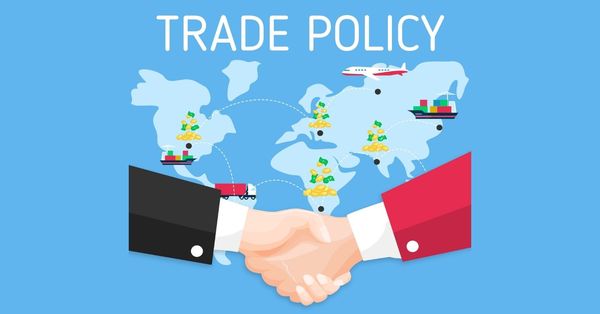Unveiling the Future of Trade Policy: Key Trends and Implications
Trade policy, a fundamental aspect of economic governance, profoundly influences how nations conduct business with one another. As global commerce continues to evolve, understanding the nuances of trade policy becomes increasingly important for businesses, policymakers, and consumers alike. This blog delves into the shifting landscape of trade policy, examining its current trajectory, key trends, and future implications.
What is Trade Policy?
Trade policy refers to the set of rules and regulations that dictate how countries engage in trade with one another. This encompasses tariffs, trade agreements, import and export controls, and other measures designed to regulate the flow of goods and services across borders. The primary goal of trade policy is to balance national economic interests with the advantages of global trade.
Emerging Trends in Trade Policy:
Recent years have witnessed significant changes in trade policy driven by geopolitical shifts, technological innovations, and economic pressures. These changes underscore the need for agile and forward-thinking trade strategies.
Noteworthy Trends Affecting Trade Policy:
- Rising Protectionism:
The resurgence of protectionist policies, including higher tariffs and trade restrictions, reflects a growing desire to protect domestic industries from global competition. While these measures aim to support local businesses, they can also lead to trade conflicts and disrupt international supply chains. - Emphasis on Sustainability:
Environmental considerations are becoming increasingly integrated into trade policies. Governments are focusing on promoting sustainable practices, reducing carbon emissions, and incorporating environmental standards into trade agreements. - Digital Trade Challenges:
The expansion of the digital economy brings new complexities to trade policy. Issues such as data privacy, cross-border data transfers, and digital taxation are now central to trade negotiations, requiring updated regulations to address the evolving digital landscape. - Regional Trade Agreements:
In response to shifting global dynamics, countries are increasingly forming regional trade agreements. These agreements aim to reduce trade barriers, enhance economic collaboration, and address regional-specific challenges, offering new opportunities for growth.

How Trade Policy Affects Businesses and Consumers?
The impact of trade policy extends to both businesses and consumers, shaping market conditions and economic interactions.
For businesses, changes in trade policy can affect everything from supply chain logistics to production costs and market access. Staying abreast of policy developments is crucial for companies to mitigate risks and capitalize on new opportunities.
For consumers, trade policy influences the cost and availability of products. Tariffs and trade restrictions can lead to higher prices for imported goods, while trade agreements can enhance product variety and affordability.
What Lies Ahead for Trade Policy?
Looking forward, several factors will continue to shape the future of trade policy:
- Geopolitical Shifts:
The changing global political landscape will impact trade policy. Emerging economic powers and evolving international alliances will influence trade negotiations and agreements. - Technological Advancements:
Technological progress will drive changes in trade policy, particularly regarding digital trade and supply chain management. Policymakers will need to address the opportunities and challenges presented by technological innovation. - Global Economic Conditions:
Global economic trends, including shifts in demand and supply chain disruptions, will play a role in shaping trade policy. Adapting to these trends is essential for maintaining economic stability and fostering growth.
Conclusion:
Trade policy is a dynamic and integral part of the global economic framework. As countries adapt to new challenges and opportunities, staying informed about trade policy developments is essential for strategic decision-making. By understanding current trends and anticipating future changes, businesses, policymakers, and consumers can navigate the complexities of trade policy and leverage its potential for economic advancement and prosperity.
FAQs:
1. What is encompassed by trade policy?
Trade policy involves a comprehensive set of regulations and agreements that govern international trade practices between nations. This includes tariffs, trade treaties, import and export controls, and other regulatory mechanisms designed to manage the exchange of goods and services across borders. The primary aim of trade policy is to balance domestic economic interests with the advantages of global commerce.
2. How have recent global developments affected trade policy?
Recent global developments, including economic tensions, geopolitical shifts, and the effects of the COVID-19 pandemic, have significantly impacted trade policy. These changes have led to a rise in protectionist measures, adjustments to existing trade agreements, and an increased emphasis on building resilient supply chains.
3. What are the effects of protectionist policies on international trade?
Protectionist policies, which involve higher tariffs and trade barriers, are designed to shield domestic industries from foreign competition. While these measures can benefit local businesses, they often lead to trade disputes, increased costs for imported goods, and disruptions in global supply chains, potentially negatively affecting international trade.
4. How is sustainability incorporated into trade policy?
Sustainability is becoming a key component of trade policy, with efforts to promote environmentally responsible practices. This includes embedding green standards in trade agreements, supporting sustainable technologies, and addressing the environmental impacts of trade activities.
5. What challenges does the rise of digital trade present for trade policy?
The expansion of digital trade introduces new challenges for trade policy, such as regulating cross-border data transfers, ensuring data protection, and addressing digital taxation issues. Policymakers need to develop updated frameworks to effectively manage these emerging complexities.
6. Why are regional trade agreements gaining prominence?
Regional trade agreements are becoming more common as countries seek to strengthen economic ties and access new markets within specific regions. These agreements focus on reducing trade barriers, encouraging investment, and addressing regional economic issues, offering a platform for collaborative economic growth.
7. How do shifts in trade policy impact businesses?
Shifts in trade policy can have significant implications for businesses, including changes in supply chain logistics, production costs, and market access. Staying updated on policy changes is crucial for businesses to adapt their strategies, manage risks, and seize new opportunities.
8. What role do geopolitical factors play in shaping trade policy?
Geopolitical factors, such as changes in global power dynamics, international alliances, and diplomatic relations, play a critical role in shaping trade policy. These factors influence trade negotiations, the formulation of trade agreements, and the implementation of trade regulations.
9. How can consumers be impacted by trade policy changes?
Trade policy changes can affect consumers by influencing the availability and cost of goods and services. Tariffs and trade restrictions can lead to higher prices for imported products, while trade agreements can enhance the variety and affordability of items available in the marketplace.
10. What future trends should we anticipate in trade policy?
Key future trends in trade policy include the adaptation to technological advancements in digital trade, the incorporation of sustainability objectives in trade agreements, and responses to evolving geopolitical conditions. These trends will shape how nations approach trade and address new global challenges and opportunities.




